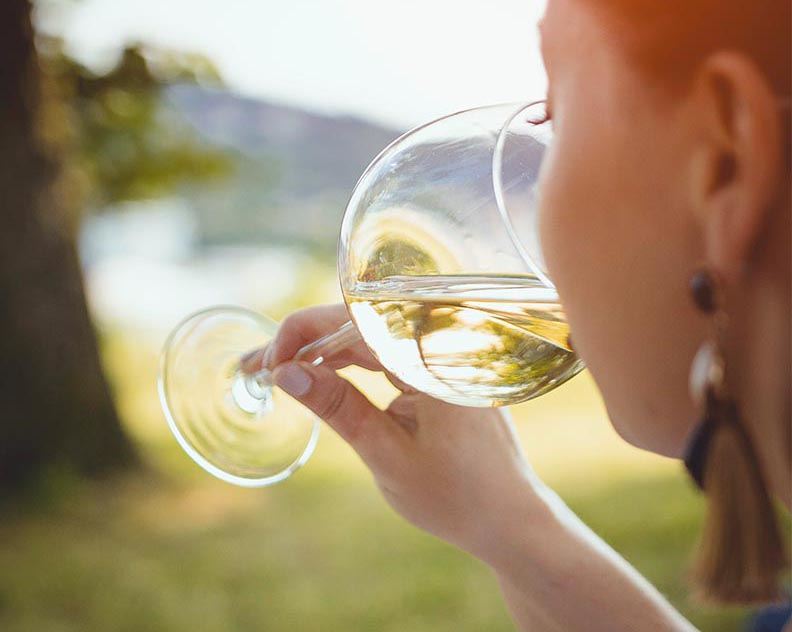In this blog, we’re going to talk about the key storage aspects to consider when storing wine. We have partnered with Elite Wine Refrigeration who is one of the UK’s very few wine storage specialists that distribute wine coolers, cabinets and wine walls.
1. Wine Storage Temperature
The proper temperature to store wine is the most important thing to think about as it is the number one condition that directly affects the quality of your wine. There is a common misconception that serving temperatures mean storage temperatures, but this is not the case. In fact, it can do more harm than good storing your red wines at higher temperatures and your white wines at lower temperatures.
The recommended wine fridge temperature or storage temperature for all wines, including white, red and sparkling, is 12°C. It has been proven that this temperature is ideal for the flavours in wines to develop at a consistent rate and allow the reactions that occur naturally inside the bottle to do so.
The temperature needs to be correct, but it also needs to be consistent. Wines need a period of stability for the chemical reactions to start occurring inside the bottle to develop the flavours, so the temperature can’t be going up and down throughout the day.
2. Keep Your Wine Out Of Sunlight
You’re probably wondering, “does sunlight affect wine?”, well, sunlight can make a wine deteriorate quite quickly, as the UV rays can interact with amino acids in the liquid, producing sulphur-based compounds reminiscent of cabbage and struck match. This can affect all wines, but sparkling wines and rosés are particularly susceptible. The former due to their high amino acid levels, and the latter as clear glass does not filter out UV light, while coloured glass does to varying degrees.
If you visit us here at Bolney, you’ll notice that the wines in our shop are displayed so that they are out of direct sunlight, ensuring that the flavours continue to develop in the bottles ready for you to enjoy when you get them home.
3. Store Your Wine At The Right Humidity
The humidity level that a bottle of wine is stored at is also important and can impact the product both inside and outside the bottle.
The ideal humidity range for long term storage is between 55-85%. This is primarily because the cork is a natural, living thing that needs to be kept moist. If the cork starts to dry out, what was a tight-fitting cork will start to shrink and lose its seal – allowing wine, oxygen and, in the case of sparkling wine, carbon dioxide through the crack. By maintaining the humidity inside your storage area, you will ensure the cork is kept in good condition and the wine ages more predictably. Of course, screwcaps are not affected by cellar humidity in this way. The other reason to manage the humidity level is to prevent excess water vapour in the air. Excess moisture can lead to mould growth, which often starts around the labels on the wine.
4. Wine Bottles Should Be Positioned Horizontally
The final thing to consider when storing your wine is the bottle position. By storing the wines on their side, it gives you maximum storage space and ensures that the cork doesn’t dry out. Ideally, the bottles will be positioned at a slight angle so that the ullage which is created when the wine is bottled remains at the top, allowing for a slower, more gradual maturation process.
How long can a bottle be stored upright?
Wine bottles should be stored in an upright position for about 2 to 7 days only. Anything more could significantly affect the overall quality of the wine
5. Protect Your Wine From Vibrations
When wines are stored by the wine producer, and indeed at Bolney, the wine won’t experience any real movement or vibrations for a period of time. This is exactly as a bottle of wine likes it to maintain its consistency and flavours.
The kinetic energy transferred to the liquid by vibration can alter the concentration of acids and alcohols in the bottle, causing changes to the sensory properties of the wine, such as the perception of sourness and sweetness.
To avoid any unnecessary vibrations, there are some simple things you can do. The first is to cover your bottles of wine with some vibration reduction material like bubble wrap or straw bottle holders. If you enjoy collecting wines, you could even invest in a wine cooler which will reduce any external vibrations and also has its own in-built vibration reduction system meaning that you can enjoy your wine at its very best. It will also maintain the humidity and temperature so is a popular choice with wine enthusiasts – particularly those who want to protect their investment.
Elite Wine Refrigeration, who we have collaborated with for this article, have created an exclusive discount code for our customers which entitles you to 5% off their storage cabinets. Simply use BOLNEY5 at checkout for 5% off your order.
If you have any further questions on wine storage, please feel free to contact us. Why not take a look at our range of English wines while you’re here and feel free to follow our top 5 tips you learnt today.

How to Taste Wine
Learning how to taste wine properly will open you up to a world of sensory pleasure. Wine tasting can have a bad rep, being associated with snobbiness and seemingly nonsensical descriptions of “bouquets” and “notes”. But when you understand the process and how to do it correctly, you’ll start getting the most out of what can be an incredibly rewarding experience.
We have been making award-winning English wine at our Sussex estate for half a century, and have been offering wine tasting experiences for years. Allow us to take you through how to taste wine for beginners, explaining each step and its significance, so you can become a wine tasting connoisseur in no time at all.




